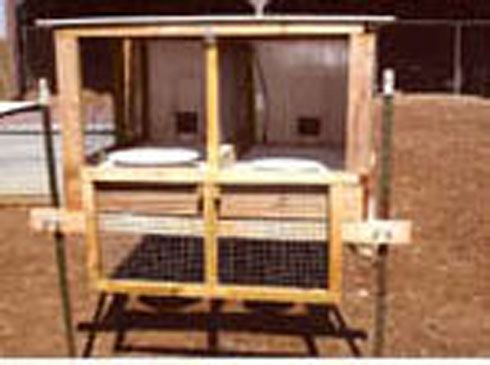 |

|
Currently there are no events or updates to display. |

Zimmerman Bantam Duck Brooder Jim and Patti Zimmerman of Kansas are two of the more successful Call breeders in North America over the last few years. One of the musts for any successful Call breeding program is a good way of hatching and rearing the ducklings, which can be a daunting task for many. The Zimmermans have developed a practical brooder system for Calls and have kindly shared pictures of their setup for the benefit of others. Call ducklings are quite delicate for their first week or so of life. They need to be kept warm and dry during that time and their brooder must be free of drafts. The setup contains two compartments both of which are fitted with heating bulbs. The brooder is designed to be freestanding outdoors due to it's size. Below the wire floor is a droppings tray for easy cleaning. In the back is a covered area where the young birds can enjoy the sun in good weather. The roof is fiberglass, the sides are plywood. The suggested size is 4 ft by 8 ft. The brooder is raised about three feet off of the ground to prevent problems with predators.
The compartment to the right has no swimming pan and is meant for the youngest ducklings. The one to the left contains a swimming pan and is meant for ducklings a couple of weeks old. While this brooder is primarily used for Calls by the Zimmermans, it could certainly be used for any of the bantam ducks.
Last updated: 12-23-2008 |
Copyright © 1997 - 2025 Acorn Hollow Bantams. All Rights Reserved. | Terms of Use | Privacy Policy



